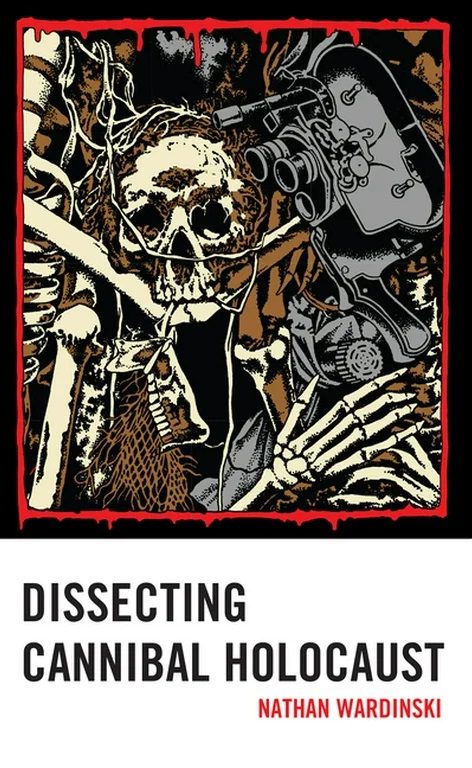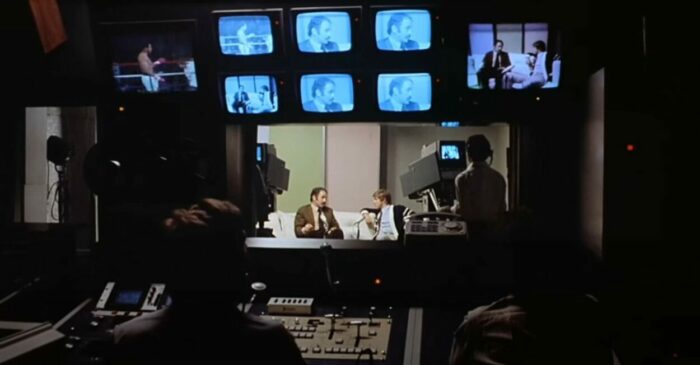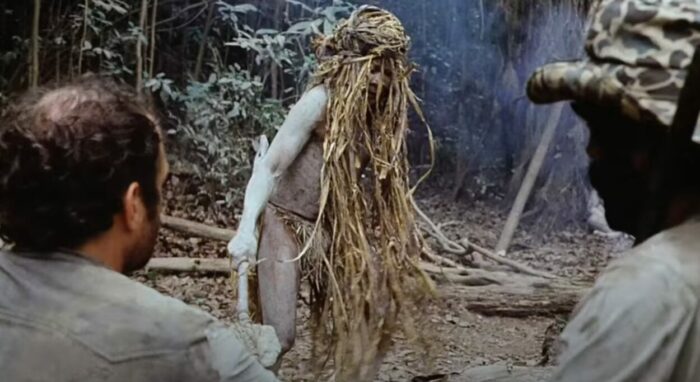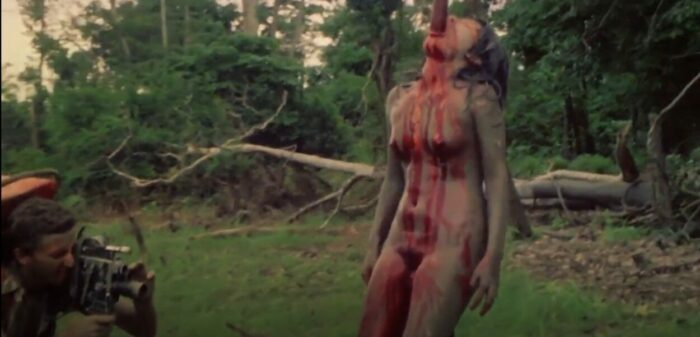Dissecting Cannibal Holocaust, a new treatise on the infamous 1980 Ruggero Deodato film, is as much invitation as autopsy. Those who accept its ambitious offering may find their eyes altered. Films that once appeared trashy attempts to shock audiences could suddenly seem like clever cinematic social critiques. Author Nathan Wardinski plunges his pen into the pejorative pit where most horror is sunk to extract a more academic appreciation for one of cinema’s most infamous films. However, the intention is not for this book to stand alone.
The focus of Wardinski’s analysis is the notorious 1980 movie Cannibal Holocaust. Until about 2005 the film was an urban legend of sorts. Censorship pertaining to obscene content—sexual assault, violence, and gore—made it near impossible for most folks to see anything other than low quality bootlegs. This, of course, heightened the rumors about its lurid content. Deodato then exacerbated every salacious notion playing up insinuations he killed cast members on camera to capture real death on screen.

Wardinski does an excellent job of summarizing this strange history of Cannibal Holocaust—much of which sounds like a horror story in and of itself and may have played a part in spawning the subgenre focused on cursed films like Demons (1985), John Carpenter’s Cigarette Burns (2005), Antrum: The Deadliest Film Ever Made (2018), and Porno (2019). But summarizing the road to infamy is only part of what makes Dissecting Cannibal Holocaust interesting.
This isn’t a text for anyone searching out elusive esoteric trivia about the production. Unlike On Location… on Martha’s Vineyard: The Making of the Movie Jaws by Edith Blake and Michael A. Smith, Dissecting Cannibal Holocaust is a series of academic analyses. Early on these examine the film within the various frameworks which contribute to its composition. Those being the literary, historical, and cultural elements feeding into the formation of the movie’s narrative. Wardinski peels back the celluloid skin revealing connective tissue tying Cannibal Holocaust to literary works like Robinson Crusoe and Herman Melville’s Typee as well as their roots in colonialism, while connecting movies such as the RKO Tarzan pictures, A Man Called Horse (1970), and the Italian mondo genre.
As Wardinski writes, “Each film creates its own reality which exists on the screen as the film unspools, but that cinematic reality also exists within a greater cultural matrix of politics and storytelling and history” (p. 142).

Afterwards the chapters take apart the intentions of the filmmakers. This requires establishing ideas of humanity’s relationship with nature, capitalism, and colonialism alongside the typical media representations of those concepts before delving into how Cannibal Holocaust criticizes them. For example, Wardinski shows the way the Disneyfication of nature misrepresents the reality that Deodato forces the audience to realize watching his film. Similarly, Cannibal Holocaust critiques racist colonizer notions of natives in a manner akin to Joseph Conrad’s Heart of Darkness and Francis Ford Coppola’s Apocalypse Now (1979).
I’m dreadfully oversimplifying some of these points. Wardinski does a much better job of laying out the case for each conclusion as well as building a comprehensible idea of abstract notions like capitalism. And though the writing is solidly inclined towards academic readings, the author never litters the page with highfalutin caltrops. That’s to say, although I’m certain Nathan Wardinski could gild the text with fifty-cent words, the average reader will be able to comprehend each essay without a dictionary on hand.
It’s refreshing to read a work like this that’s meant to be accessible rather than showcase the writer’s personal vocabulary. That’s because part of the primary purpose behind Dissecting Cannibal Holocaust is the invitation to regard horror more highly. Wardinski does a great job of showing how the genre, despite commercial success, has always been disregarded as something reprehensible. With this book there’s a hope it’ll invite others to more seriously read into films like Cannibal Holocaust.

Wardinski’s Chapter 9 explores “The Ethics of Cannibal Holocaust.” Its subject matter is the repeated sexual violence, unsimulated animal killings, and racism seen throughout the film. Many of the questionable choices made by the filmmakers are written off as a “commitment to plumbing the depths of human violence and the amoral nature of universe.” That apparently gives the film “integrity” and “the ethically questionable creative choices were necessary for the film to transcend filmmaking and storytelling norms and find truth.” There’s even a utilitarian dodge juxtaposing the handful of animal killings in Cannibal Holocaust against the meat industry which slaughters millions every year.
Racism, sexual violence, and animal abuse stir up visceral emotions in people. Expecting them to consider their use through a cold logical lens may be asking the reader to go a step too far. Yet, that seems to be a jab on accord with one of Wardinski’s overarching points.
As Dissecting Cannibal Holocaust concludes the author suggests that the film is so widely despised because its nihilistic depiction of humanity is so raw, showcasing truths no one wants to acknowledge that people are disgusted by the movie’s honesty. In other words, it’s just too f*cking real; naïve hypocrites unable to handle that refuse to admit the artistic merits of the movie. It’s borderline bait since Wardinski also closes by inviting others to write their own rebuttals.
I’m not implying his conclusions in chapter 9 are at all disingenuous. However, they are the ones most likely to rub readers the wrong way, especially considering there is next to no real examination of the mistreatment of the cast. Performers such as Carl Gabriel Yorke have mentioned in the Shudder produced tv documentary Cursed Films how traumatized they were by the production, but Dissecting Cannibal Holocaust is more concerned with the point the film is trying to make as opposed to how it was made. Outside of technical details such as intentional shifts between 35mm and 16mm, the book isn’t concerned with much behind the scenes.

This may bother some readers. After all, Cannibal Holocaust is notorious for its mistreatment of the cast. That may bias some folks coming in expecting lurid descriptions of Ruggero Deodato being monstrous. The closest the book gets to that is a passing mention of how unfortunate it is that the director mirrored the fate of his fictional characters.
Still, one can’t discuss Cannibal Holocaust without sparking controversy. After all, mentioning it is a kind of shibboleth. Only a certain sort has heard of it, let alone seen the picture, and although it’s easier to see now, with improved quality courtesy of Grindhouse Releasing, the film remains a cult classic for a reason. Yet, Dissecting Cannibal Holocaust seeks to dispel the taboo.
Although I don’t necessarily agree with every conclusion in the book, I do respect that there are well-constructed arguments to engage with. These aren’t a series of personal opinions based on feelings, they’re a collection of evidenced points outlining where Wardinski’s conclusions came from. The majority of Dissecting Cannibal Holocaust is a thought-provoking text. I thoroughly enjoyed the takes on nature, culture, and literary history. Its invitation for others to follow its lead is also enticing. Hardly casual reading, it is stimulating, and though the price tag is a little imposing, this academic text is always accessible.


